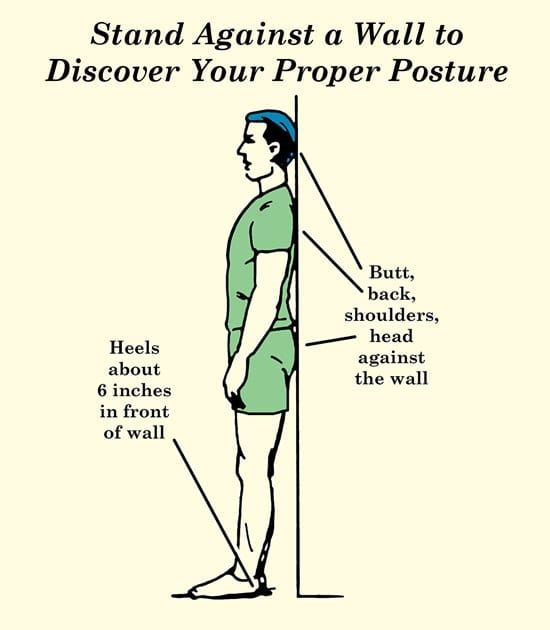There is a big difference between watching an exercise video, reading a book, and actually doing an exercise.
While you may think that you are matching what you saw or read, your body may be doing something else entirely. No matter whether you are jogging, doing jumping jacks, or back exercises; those differences can lead to injury and life long mobility problems. If you are going to use exercises to relieve back pain, use the following tips to make sure you do them safely and effectively.
Practice With a Trainer First
Before you can become proficient in doing an exercise, there is a learning period where your muscles adapt to the steps involved. During that time, you also form habits that determine how you actually carry out each step. If your form is not correct, you can strain muscles, tendons, and ligaments. Even if you don’t recognize the damage, it can build up over time and make your condition much worse.
As a case in point, you are probably familiar with squats[1]. No matter whether you do them with or without weights, form is extremely important. Unfortunately, many videos and online “professionals” actually do this exercise wrong.
This is just one of many reasons why you should work with a professional trainer who is also certified in back pain management. It takes someone with experience to watch carefully while you are doing your exercises. Learning how to do back exercises the right way and eliminating bad habits early on is the best way to ensure your exercise sessions are safe and effective.
Be Well Rested Before You Start
Have you ever tried to put in a full days work after staying up all night beforehand? Chances are, you made more mistakes that day, and had a harder time controlling your moods. When you are doing exercises, especially in private, it is very easy to get sloppy. If you are tired, the inclination to get careless will be even greater.
When it comes right down to it, preparing to exercise can take several hours before you enter your workout area. If you are not well rested, your muscles and joints will have a harder time coping. To add insult to injury, your mind will be more inclined to wander. These are things you cannot allow to happen when you are exercising to relieve an already compromised back.
Avoid Caffeine and Pain Killers
Doing exercises can be very boring, especially if you have to do the same things several times a day for days or weeks on end. While caffeine can fool your mind into thinking you are more alert or less tired, your body may not follow suit. Given that some back exercises can be very intricate or involve a holding various poses, it’s just not a good idea to add caffeine to the mix.
Depending on your situation, taking pain killers daily may be a necessity. If the pain killers are very strong, you may not be able to feel when you are stretching too far, or perhaps putting too much pressure on a certain area. This all can spell disaster when you are doing back pain exercises.
At the very least, try to pick a time when the effect of the pain killer has mostly or completely worn off. You may find that you have problems more related to stiff muscles or weakness as opposed to something that truly requires waiting before you engage in an exercise routine.
 Have a Dedicated Warm Up Period
Have a Dedicated Warm Up Period
It is always very tempting to launch right into the exercises you are interested in doing for any given session. This is also the fastest way to sprain or strain muscles, ligaments, and tendons. When your muscles and joints are warmed up, they are more efficient and ready to take on the extra strain associated with exercise.
Warm up time should also include a few minutes of meditation and focus. It does not matter whether you choose to recite some inspirational quotes, visualize something that inspires you, or listen to a song that helps you feel more energized. This is your time to prepare your body and mind for a good workout that will help you relieve back pain and regain good back health.
Videotape Your Exercise Sessions
After you got your driver’s license, you were probably very careful to obey all the laws and move carefully in traffic. As time goes on, however, bad habits creep in regardless of whether you are driving or exercising. When it comes to exercise, losing the optimal form or becoming sloppy with warm-ups and cool downs can cripple you for life.
At the very least,when you video tape your exercise sessions you can always take a good look at what you are doing afterwards. If you see bad habits starting to develop, you can always use the next session to make improvement.
Do not forget to move the video camera so that it catches different angles on different days. While your form may look perfect from the left side, something may be off from a rightward angle or from behind.
It will also be very helpful to show these tapes to your trainer or physical therapist. This professional might have some tips on how to improve your form, or even suggest a variation of the exercise that will work better for you.
Use Full Length Mirrors While Exercising
Back pain exercises are like many other things in life. The best time to catch a mistake is when you actually make it. Using mirrors in your exercise area can be very helpful. If you set up full length mirrors all around your exercise area, you have a good chance of seeing when your form is off.
This is also the best way to see your entire set of movements all the way around while you are working. That being said, if you have to keep your head and neck in a particular position, do not move them out of proper form just to try and see what your form looks like. It is better to make use of video cameras for that purpose.
Take Your Time
There are plenty of venues where speed is the most important thing. Doing exercises to relieve back pain isn’t one of them. If you find yourself trying to complete a certain number of sets based on clock time, you are bound to wind up with injuries and incorrect form.
It is also very important to make sure that your exercise time is not sandwiched between other activities that can cut into your session. Give yourself plenty of time to get into the routine, do the exercises, and then cool down and relax afterwards.
Have a Dedicated Cool Down Period
Speaking of cooling down, this is also something else that many people overlook when it comes to exercising for back pain. After you are done with the core exercises, you may be very tempted to simply leave the workout area, take a shower, and go on about your day.
Unfortunately, failure to cool down properly can cause just as many muscle and joint injuries as failure to use warm up exercises. Giving your muscles time to gear down to lower or more normal levels of activity is very important.
Remember, while you are exercising, your muscles and joint tissue will stretch or change to accommodate the extra work. If you do do cool down exercises, the muscles and joints will not have a chance to re-position for the shift in activities.
Understand the Use of Back Braces and Supports
Many people interested in doing exercises for back pain think that braces or back supports will keep them safe from injury. It is more likely these devices will do more harm than good for the following reasons:
- Your body will get accustomed to doing the exercises with a support system in place. Instead of developing muscle and strength, you will just be acclimating your body to dependence.
- If you think you won’t get injured because of sloppy form or bad maneuvers, there is more chance you will do things that will harm your body.
- They may impede your range of motion in way that causes injuries to your neck or other areas of your body.
Unless your doctor or physical therapist tells you that you must wear a back brace while doing exercises, it is best to avoid using them on your own. As with the routine itself, if your doctor does tell you to use one of these devices, make sure you start off by working with a certified trainer. This will be the best and fastest way to ensure you are able to remove the device one day and be able to keep it off.
For the most part, learning to do back exercises safely isn’t especially difficult. On the other hand, keeping your form at optimal levels for weeks, months, or even years on end can be harder than expected. This is why it important to always work with a trainer and use some basic tools to ensure you are always doing your exercises properly.
Having a routine that integrates a warm up and cool down period can also save you from a lot of injuries and also make it easier to integrate back pain exercises into your daily life.
Resources
[1] https://www.stack.com/a/squats








































































I am suffering from back pain. But i used to eat pain killer when i have a pain. If i do these exercise can i get relief of this pain ?
Hello, Stella. These exercises are designed to help you relieve your back pain. Also, discover more by clicking the image-banner at the end of the article.
Alex from Survivopedia 🙂